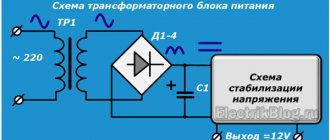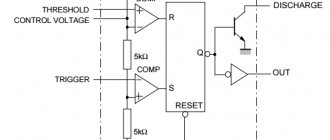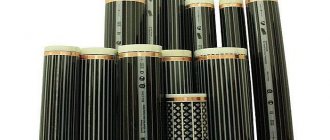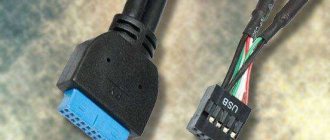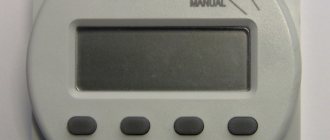We can say that we live in a world of digital technology. There are a huge number of gadgets and electrical appliances around us that make our lives better. Most of them work from the network. However, some devices are battery operated. It's a simple battery, but it's what powers watches, toys, remote controls, and more.
At the same time, there are such a huge number of species that sometimes you begin to get confused in all this diversity. Today we would like to talk about two of them: AA and AAA. We will compare the two batteries and tell you what their differences and similarities are.
History of creation
These batteries have their own history of development. The battery as a voltaic cell became popular in the 1920s. But Georges Leclanche is considered its inventor - it was he who in 1867 created the prototype of the battery known to us. Of course, at that time the battery had a completely different look.
The Eveready company began mass-producing them for consumers. At first, the company's focus was on owners of radios, but soon the new product was appreciated by workers in mines, enterprises, and sailors.
In 1920, the well-known Duracell company appeared on the market and began producing various batteries, which were especially popular. They have become more compact, lighter and, most importantly, cheaper. They consisted of a graphite rod, manganese oxide and a zinc cup. The operating principle was based on the occurrence of an electrical impulse.
Due to the presence of a graphite rod, manganese-zinc batteries were sometimes called carbon-zinc batteries. Over the entire history of their existence, such batteries have been improved and have undergone many changes and innovations. At the moment they can be found in any store. And carbon batteries were replaced by others, as described below.
What do batteries have in common?
These batteries have some common features. First of all, this concerns the voltage - in both cases it is slightly more than 1 V. It is also worth highlighting the service life. In each, it is quite long (provided that it was not a budget device that was purchased, but a more expensive option).
They also differ in their affordable price: some of the most expensive batteries will cost 100, maximum 150 rubles. In this case, you will buy a battery that will last for quite a long time.
Important! Budget options from our Chinese neighbors have a lower price. However, their service life can sometimes be limited to 1–2 months, even in remote control units.
Types of batteries by size and shape
Power supplies come in different sizes and shapes. To classify batteries, the American or European system is used. Special tables help determine the type of battery. The product is marked in accordance with the American system.
The most popular batteries are:
- Finger (AA). It has the shape of a thin cylinder 5 cm high. If the designation L is present on the body, the voltage source is an alkaline composition.
- Mizinchikovaya (AAA). It is a cylinder 42-44 mm high. Installed in children's toys, electronic watches and hand-held flashlights.
- Medium (C). Height is 5 cm, width – 2.5 cm.
- Large (D). The height of the battery reaches 6 cm, width – 3.5 cm.
- Round tablets. The diameter is 5-15 mm. The power supply produces a voltage of 3 V.
A table indicating the shapes and design dimensions of batteries, according to the American system.
What are batteries made of?
There are four types of batteries. Despite the fact that their operating principle is the same, all current sources have a unique design and consist of different parts.
"Finger" and "pinky" batteries
“Finger” and “little finger” current sources are a small cylinder. These are one of the most common battery options. They consist of the following elements:
- negative charge - cathode;
- an insert that acts as a kind of gasket;
- housings;
- membranes;
- an electrolyte that ensures the normal course of a chemical reaction;
- a rod made from a carbonaceous compound, such as coal or soot;
- fixing washer;
- positive charge - anode.
This is the standard design for most cylindrical batteries. But there are devices consisting of a rod made of coal, metal parts and special powder.
What does a coin cell battery consist of?
The battery, which has an unusual flattened shape, is also called a “tablet”. It is most often used in watches and various alarm systems. It consists of the following elements:
- anode - one of the covers plays its role;
- cathode - the second cover serves as the negative contact;
- gaskets additionally impregnated with electrolyte;
- mercury dioxide;
- zinc powder;
- waterproof layer;
- rings ensuring reliable sealing.
Reference. If you heat the “tablet”, it will simply explode.
Cell phone battery
The design of a cell phone battery is somewhat more complex than that of conventional batteries. It includes:
- positive and negative contact;
- anode body;
- cathode glass;
- sealing agent;
- separator;
- insulating composition;
- protective membrane;
- diaphragm;
- housing made of aluminum or other metal.
What does the crown consist of?
The rectangular power supply is structurally different from other batteries. The positive and negative contacts are on top of each other. They are located at the top of the device. Below is a base made of plastic. A plate extends from the negative contact and is fixed to the negative pole.
The device body is made of metal. Inside it are six small flattened rectangles, each of which is an individual battery. The charge of such a “barrel” is 1.5 V. Between the plates there is another one - a special one.
The structure of the power supply is quite simple:
- two contacts - positive and negative;
- housing made of aluminum or other metal;
- two plastic plates;
- six interconnected “barrels” of 1.5 volts each;
- carbon compound rod;
- plates for insulating “barrels”;
- film;
- outer shell.
What is the battery housing made of?
The housing is one of the most important design elements of a current source. It performs a protective function by holding the contents of the battery inside and preventing its destruction.
Which power supplies have a body made of zinc?
Many people ask this question for good reason, because Zn can be used in a variety of experiments. Or just sell it. Thus, all salt batteries are equipped with a zinc body. Usually this is indicated directly on it.
Recently, it is increasingly possible to find current sources with a housing made of tin or iron. The material used depends on the internal configuration of the batteries. Iron and tin can provide maximum protection and increased strength.
What is the casing of cylindrical batteries made of?
It has a simple design, which includes:
- top and bottom parts;
- lateral oval part;
- marking indicating the type of current source.
Reference. Many people mistakenly refer to the housing as the compartment in which the batteries are placed.
Chemical composition of batteries
The chemical composition depends on the specific type of current source. Most batteries contain the following chemical compounds:
- iron;
- lead;
- manganese;
- aluminum;
- lithium;
- cadmium;
- mercury (lately they are trying not to use it).
Reference. It is worth keeping in mind that one battery cannot contain all chemical elements at once.
Difference in shapes and sizes
First of all, when you remove the dead battery from the device, determine its shape and size. A different type of battery will not work with your device.
Let's start with cylindrical batteries. The familiar finger and little finger elements are just that. However, there are also larger individuals in this group. Let's start with the most popular type.
Most portable radios, flashlights and other electronic devices run on AA batteries. You will find them in every stall. In addition to the two capital letters, they may read R6, LR6 or FR6. We will explain this cipher below.
AAA elements are slightly smaller than their counterparts. People call them “little fingers”. They are found in the same devices as AA batteries, only in more compact ones, where two-letter batteries do not fit. On them you will see symbol combinations such as R03, LR03 or FR03.
Batteries of size C (R14, LR14) are comparable in height to AA batteries and are twice as thick. Such elements are used in larger and more energy-intensive equipment - portable tape recorders, electric lamps; as a rule, several pieces in succession.
And the giant of all cylinders - the D battery (R20, LR20) - has similar applications.
The first of the non-cylindrical elements will be the nine-volt “Krona”. The name comes from the brand of batteries that were produced in the USSR. They are parallelepipeds with two connectors (poles) on one side - a socket (minus) and a plug (plus). Crowns are common in measuring instruments and self-contained medical equipment. You can easily distinguish them from others by their shape, and the inscriptions 6LR61 or 6F22 will confirm this.
The 3R12 and 3LR12 batteries are massive batteries that were designed for flashlights. Now they are used in homemade electronic devices where a voltage of 4.5 V is required.
Another group of batteries is button batteries (“tablets”). They are intended for devices that do not accommodate elements of a different standard size. These could be wristwatches, calculators, small LED equipment, electronic souvenirs, garlands, hearing aids, laser pointers.
Additional recommendations for choosing a battery and its use
The main criteria for choosing batteries and accumulators were discussed above. But there are a number of other points that also need to be taken into account when purchasing. Here's a quick summary of the main recommendations:
- be sure to check the manufacturing date of the batteries (do not buy old batteries, since they lose 10-20% of power after 1 year of storage);
- do not buy cheap models for energy-intensive devices and expensive ones for low-power devices;
- do not take batteries on open shelves in winter (they do not withstand frost well);
- if you need several batteries, take them as a set, it’s cheaper (there can be up to 20 pcs in one package);
Large pack of Panasonic batteries
- if one device requires several batteries, make sure that they have the same characteristics and release date (combining new and last year’s batteries is highly not recommended);
- When ordering a battery, make sure that it comes with a box (it is needed for storage and transportation).
Panasonic batteries are included with the case
You can also give some tips regarding the use of batteries:
- If you rarely use the device, remove the batteries and do not leave them in it;
- do not try to recharge regular batteries - they are not designed for this and may catch fire or even explode;
- Do not delay replacing discharged salt batteries - electrolyte often leaks from them.
Leaking salt batteries
Alkaline batteries leaking
By the way, if you use old equipment (for example, a radio), for which batteries are no longer produced (or they are produced, but of poor quality), use a special adapter. With its help, you can “teach” equipment to work on modern AAA or AA models, which it simply does not directly recognize. You can purchase such an adapter for batteries in our online store, especially since its cost is purely symbolic.
We recommend the product
Panasonic Eneloop adapter from type AA to C 2BP
In stock
Length, mm: 30 | Height, mm: 120 | Width, mm: 80 | Adapter: from type AA to C | Type: adapter adapter |
And most importantly, do not forget that used batteries are toxic waste. Batteries must be disposed of correctly, i.e. hand over to special collection points. Yes, there are not many such points in Ukraine yet, but at least in large cities they exist.
Types of batteries by chemical composition
Most often, the functions of voltage sources are performed by zinc-manganese and lithium compounds. There are other types of batteries.
Alkaline or alkaline
Alkaline sources are those where electrical voltage occurs due to the transformation of viscous calcium hydroxide. The zinc anode is in a powdery state. The cathode is made from magnesium dioxide. The material is corrosion resistant, which helps extend battery life.
Alkaline battery design
Compared to salt elements, alkaline elements have a greater capacity. They can be used at low temperatures. They are used by people involved in construction, metal detecting, and swimming.
Mercury batteries
Not widely used due to high cost and increased toxicity. After all, they can leak, and mercury is dangerous for humans. But such a galvanic cell can be recharged several times. Although over time its capacity is lost - due to the fact that mercury flows down and collects in drops inside the battery.
The advantages of these products include good uninterrupted operation in harsh atmospheric conditions and a long shelf life.
Silver
They work in a similar way to mercury batteries. There is only one drawback - the very high cost. But at the same time, their capacity is 30-50% greater than that of lithium batteries. Silver batteries work well at high and low temperatures and have a long service life.
Lithium
The cathode of lithium power supplies is made of lithium, and the anode material can be manganese dioxide, carbon monofluoride or other materials. The electrolyte is made from organic materials.
These elements are distinguished by their large capacity, long shelf life (up to twelve years), low weight, and in addition, they can provide stable voltage. The main disadvantage of lithium electricity sources is their high cost.
Lithium batteries are used in powerful devices that must operate for a long time. They are recommended to be built into pacemakers and other medical equipment, photo flashes, portable speakers, etc.
This type of chemical power source includes lithium iodine batteries. They use iodine as an oxidizing agent and lithium as a reducing agent. Such batteries can be quite powerful. They are stored for a long time and discharge slowly.
Lithium batteries also include batteries with a solid cathode. Their cathode is made of lithium, and metal sulfides and oxides are used for the anode. The electrolyte material is salt solutions. They can operate in a wide temperature range and are quite capacious. Their main drawback is their high cost.
In addition, lithium batteries include liquid oxidizer batteries. They can operate at temperatures from -60 °C. When using a powerful load that consumes a large amount of electrical energy, they quickly discharge. Also the cost is high. Most often used in space research and the military industry.
With liquid oxidizing agents
Sulfur dioxide is used, which is immersed in a thick liquid of thionyl chloride. The electrolyte here is lithium bromide. Carbons are cathodes. They are spread on a plate made of aluminum, stainless steel or nickel.
If the device consumes a lot of energy, the battery will drain quickly. This is the main disadvantage of this power source. It can function at temperatures from -60 degrees. Its negative features also include price and explosiveness. Sometimes elements of this type with increased toxicity may be encountered. Used in the space or military industries.
Zinc air
This type of battery is very sensitive to external factors, such as humidity and air temperature, so they are recommended for use indoors. Positive properties - large capacity and environmental friendliness. Once opened, the packaging can last no more than one month.
The cost of these devices cannot be ignored. Silver, lithium and alkaline batteries are expensive, but they can last for a long time. If they are used correctly, they can pay for themselves several times over, while salt batteries will literally fail in a short time.
- You should also take a closer look at the packaging and battery manufacturer. In most cases, manufacturers always mark the battery housing so that the buyer can determine the type of electrolyte.
- When selecting a battery, it is necessary to take into account that under different loads it will behave completely differently. In addition, the functionality will be influenced by the environment. So in winter, but in the cold, the electrical conductivity of the electrolyte will deteriorate, as a result of which its capacity will also decrease.
- It is necessary to take into account the fact that when batteries are stored for a long time, they can lose about 30% of their initial capacity. Therefore, it is recommended to take a close look at the production date. You should know that domestic manufacturers mark the date of manufacture, and foreign manufacturers indicate the last date of use of the battery.
- It is necessary to carefully inspect the elements of the device to ensure that there are no defects that could reduce the efficiency of operation.
- When selecting power supplies for a specific device, it is necessary to take into account the dimensions of the mounting space for them; it can vary. For example, a remote control will require little finger batteries, and for some player you will have to purchase finger batteries. For electronic scales, hearing aids or other small devices, you will need to buy button batteries. In this case, it is necessary to take into account the markings, thickness and diameter of the “tablet” so that it is suitable for a specific device.
What markings may batteries have?
According to the regulations adopted by the International Electrical Engineering Commission IEC, all voltaic power sources can be divided into several categories based on parameters such as electrolyte composition and type of active metal. According to this standard, there are only 5 types of “classic” cylindrical batteries:
- alkaline;
- saline;
- zinc air;
- silver;
- lithium.
The R label denotes one of the most common types: saline. The cathode of a salt battery is in most cases made of zinc, the anode is made of manganese, and the electrolyte appears in the form of ammonium chloride and the same zinc. The features of this type include a low (about 1.5 volt) voltage, a high level of self-discharge, a not too large capacity and malfunctions at low temperatures.
Reference. Salt batteries are the cheapest to produce.
This type is also popularly called carbon-zinc or zinc-carbon. Most often, the shelf life does not exceed two years.
The letter combination LR usually denotes alkaline batteries. They have the same cathode and anode, as well as an alkali metal hydroxide electrolyte. Their positive aspects include a small self-discharge, increased capacity compared to the previous type and an increased (up to 10 years) permissible storage period. However, in severe frosts from -20 degrees Celsius and below, such batteries can also begin to fail.
Reference. These batteries are also called alkaline batteries.
If the packaging is marked CR, then you have one of the highest quality batteries in your hands: lithium. A lithium cathode and an anode made of the same compound as “alkalines” provide these batteries with a stable voltage of 3 volts, good capacity, virtually complete absence of self-discharge and a shelf life of up to 12 years. They resist frost well and confidently “hold” temperatures down to -40 degrees, but the price tag for such batteries is much higher than for salt batteries.
Manufacturers use the abbreviation SR to designate silver galvanic cells. Silver is present in them as an oxide and acts as an anode, while zinc serves as a cathode. Distinctive features of SR: voltage of 1.55 volts, low self-discharge, large capacity and preservation of performance at temperatures up to 30 degrees below zero.
Reference. Most lithium batteries are used in watches. Their shelf life usually does not exceed ten years.
Finally, the letter combination PR denotes the zinc air type. Its most obvious disadvantages include its short service life (measured in weeks from the moment the package is opened), but it also has a significant “plus”: this type is the most environmentally friendly for disposal.
In addition, the positive aspects include high capacity and acceptable operating temperature conditions at a voltage of 1.2-1.4 volts. Self-discharge is quite high, so such batteries must be sealed during storage. If stored properly, they can last for years instead of just weeks.
Application area
The scope of use of batteries and accumulators of type “C” is very wide. Portable power sources are used in devices that require increased power consumption.
In addition, such batteries can be installed in series, so they can be used to ensure the functionality of devices that require a significantly higher voltage to operate than 1.5 or 3.7 Volts.
Most often, power sources of this type can be found in the battery compartments of the following devices:
- Radio receivers.
- Lanterns.
- Measuring instruments.
- Children's toys.
Batteries can be type “C” and can be installed not only in portable devices, but also in permanently located household appliances. For example, with the help of one or two batteries, fuel can be ignited in gas stoves or water heaters.
AA battery: what does it mean?
This marking indicates AA batteries. The diameter of such a product is no more than 1.5 centimeters, and the length is about 6. The body is made of metal.
Reference. As a rule, expensive elements have durable metal, while budget options have softer metal.
The weight of this battery varies from 14 to 24 grams depending on the chemical source (salt is lighter). The capacity indicator also depends on this factor. In saline it is usually 1500 mAh, in alkaline 2900 mAh.
Reference. AA batteries have been in production for over 100 years. They were first presented to the world back in 1907.
By the way, the first option has a lower price and can be used in mild frost. However, if the temperature drops below -5, performance deteriorates.
AA batteries are very popular as they are used in various devices. They owe their name (finger) to their small size, which coincides with the middle finger. The official names are AA, as well as R6 and LR6.
Among the brands it is worth highlighting Duracell. Products manufactured under this brand are the most popular because they have increased capacity and service life (as the commercial says, “they work up to 10 times longer”).
If we talk about rechargeable batteries, then we should highlight the Panasonic Eneloop. They hold a charge even after numerous recharges.
Reference. However, not all budget options are as bad as advertisements for Duracell and Energizer batteries tell us. There are also good options among domestic manufacturers. Among others, it is worth highlighting “Cosmos”. Despite their low price, they are characterized by high capacity and long service life.
Is it possible to charge
If the battery is a type “C” battery, this means that its charge can be restored by installing it in the holder of a special device. It is almost impossible to revive a salt or alkaline battery in this way.
Violation of instructions for the safe use of galvanic cells can lead to explosive depressurization of the product.
If the battery discharge has reached a critical level, it should be removed from the device and replaced with a new product or a rechargeable battery.
Battery types
Did you like the video? Subscribe to our channel!
The operation of most radio-electronic devices and household appliances is impossible without replaceable compact power supplies. Galvanic elements, which are commonly called batteries, are power sources for radios, quartz watches, kitchen scales, children's toys, digital devices, flashlights, as well as control panels for stereo systems, air conditioners, televisions, etc.
You need to choose batteries that are optimally suited for each specific electronic device, taking into account their main characteristics.
Voltage The rated voltage of power supplies depends on their type and is indicated on the housing. Today batteries are produced with a voltage of 1.5; 3 and 9 V.
Capacitance Based on this characteristic, it is possible to determine the maximum time period during which the galvanic cell can serve as a power source for the load connected to it. The battery capacity is marked on the battery body.
Self-discharge Characterizes the natural decrease in the rated capacity of a power source without load during its storage in the warehouse of the manufacturer or at the point of sale. Depending on the temperature and storage period, the loss of capacity can reach 30%, so when purchasing a battery you need to pay attention to the manufacturing date.
Galvanic power supplies are produced by Russian and foreign manufacturers; based on the electrode material and electrolyte composition, they are divided into:
- salt;
- alkaline;
— lithium;
- mercury and silver;
- battery-powered.
The duration of their uninterrupted operation directly depends on what batteries are used
Salt Batteries of this type use zinc and manganese oxides to make electrodes. The electrolyte used is zinc chloride with a small addition of calcium chloride. The only advantage of these power supplies is their low cost. Salt batteries are characterized by a sharp drop in voltage during operation, as well as in capacity when the air temperature drops to negative values. In addition, the shelf life of such batteries does not exceed two years from the date of manufacture. Power supplies of this type are recommended for installation in devices with low power consumption. The nominal voltage of salt batteries does not exceed 1.5 V.
Alkaline The anode of alkaline batteries is made of zinc alloyed with lead, bismuth, indium and aluminum. The cathode is made of manganese dioxide with the addition of graphite or acetylene black. The electrolyte consists of potassium or sodium hydroxide with the addition of lithium hydroxide and zinc oxide. Alkaline batteries are universal both in cost and in service life, which exceeds the service life of salt batteries by 50%. In addition, the drop in capacitance characteristics and voltage occurs smoothly. The rated voltage of alkaline batteries does not exceed 1.5 V.
Lithium In this type of battery, the anode is made of lithium, and manganese dioxide, copper oxide, iodine or iron disulfide can be used as the cathode. The composition of the electrolyte depends on the material from which the cathode is made. Lithium power supplies have high energy intensity and stable capacitive characteristics, regardless of the magnitude of the discharge current. Such batteries ensure long-term operation of the devices in which they are installed, including at low air temperatures. The rated voltage of lithium batteries can reach 3 V.
Mercury and silver Despite their high energy intensity and constant voltage throughout their entire service life, mercury and silver power sources are not widely used due to high cost, difficulties in disposing of used batteries and the need to comply with increased safety measures during operation.
Rechargeable Such power sources are an alternative to all previously described batteries. The main advantage of rechargeable nickel-cadmium or nickel-metal hydride batteries is the ability to restore their charge after the capacitance characteristics and rated voltage are reduced to a minimum level. For this, special chargers are used.
Form factor Galvanic power supplies differ not only in the material of the electrodes and the composition of the electrolyte, but also in appearance, as well as shape, the so-called form factor.
AA batteries are cylindrical batteries designed for installation in flashlights, watches, children's toys, remote controls for household appliances, etc.
Pinky batteries (AAA) - Pinky batteries are used for the same purposes as AA form factor power supplies and differ from them in having a slightly smaller diameter.
A23 and A27 - batteries of these form factors differ from AA and AAA power sources in shorter length and are used to complete miniature radio frequency devices.
C and D - Currently, such batteries are used extremely rarely, since they have a significantly larger diameter than AA power sources. The battery dimensions of these form factors are not suitable for modern radio-electronic devices.
The crown is an outdated form factor, shaped like a rectangular parallelepiped. In the recent past it was very common. Unlike all other power sources, its “positive” and “negative” electrodes are not placed diametrically opposite, but side by side. A single 9V battery.
“Tablet” - unlike batteries of other form factors, which can be salt, alkaline or lithium, sources of this type are of the lithium type and differ not only in diameter and height, but also in the composition of the electrodes and electrolyte. Such galvanic cells have their own marking system. “Tablets” are needed to power miniature and subminiature devices.
Knowing the basic characteristics of batteries, you can easily determine which batteries to choose as a power source for a particular electronic device.
Important: It is strictly forbidden to throw away used batteries with household waste. The chemical elements from which the electrodes of power supplies are made and included in electrolytes are a source of environmental pollution. In every city there are specialized points where dead batteries of all types, as well as battery-type power supplies, are collected and disposed of.

